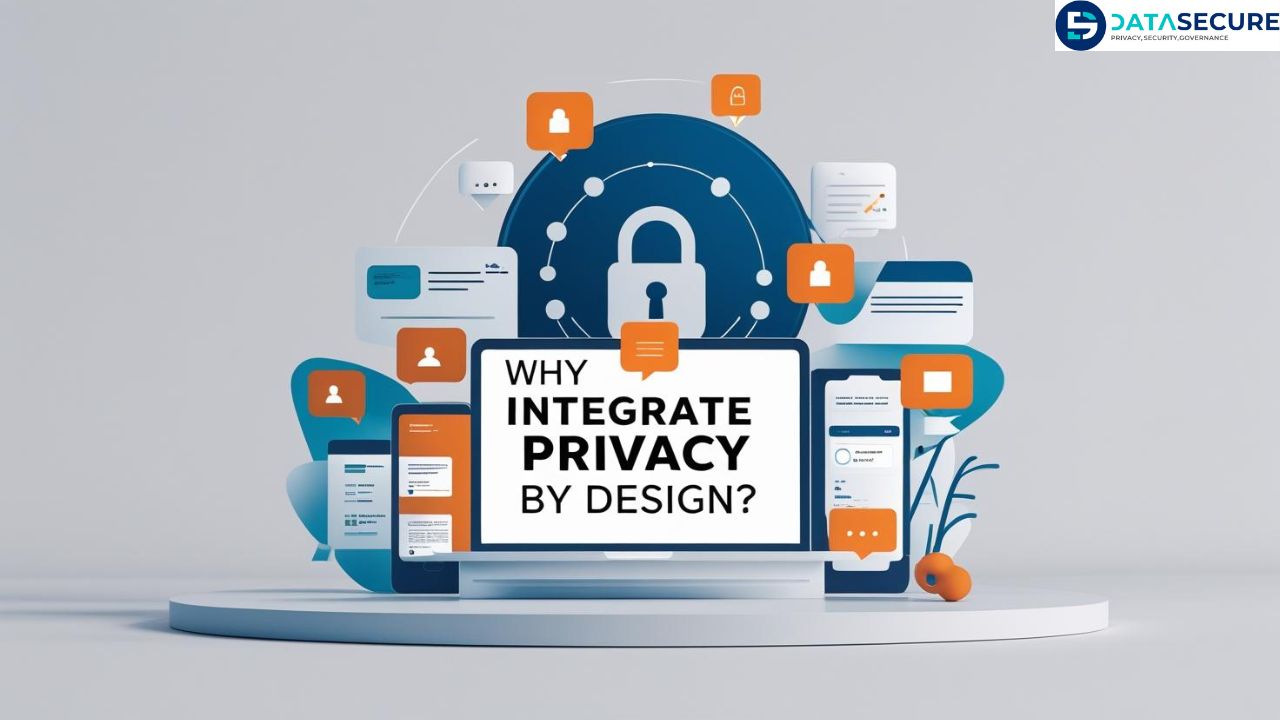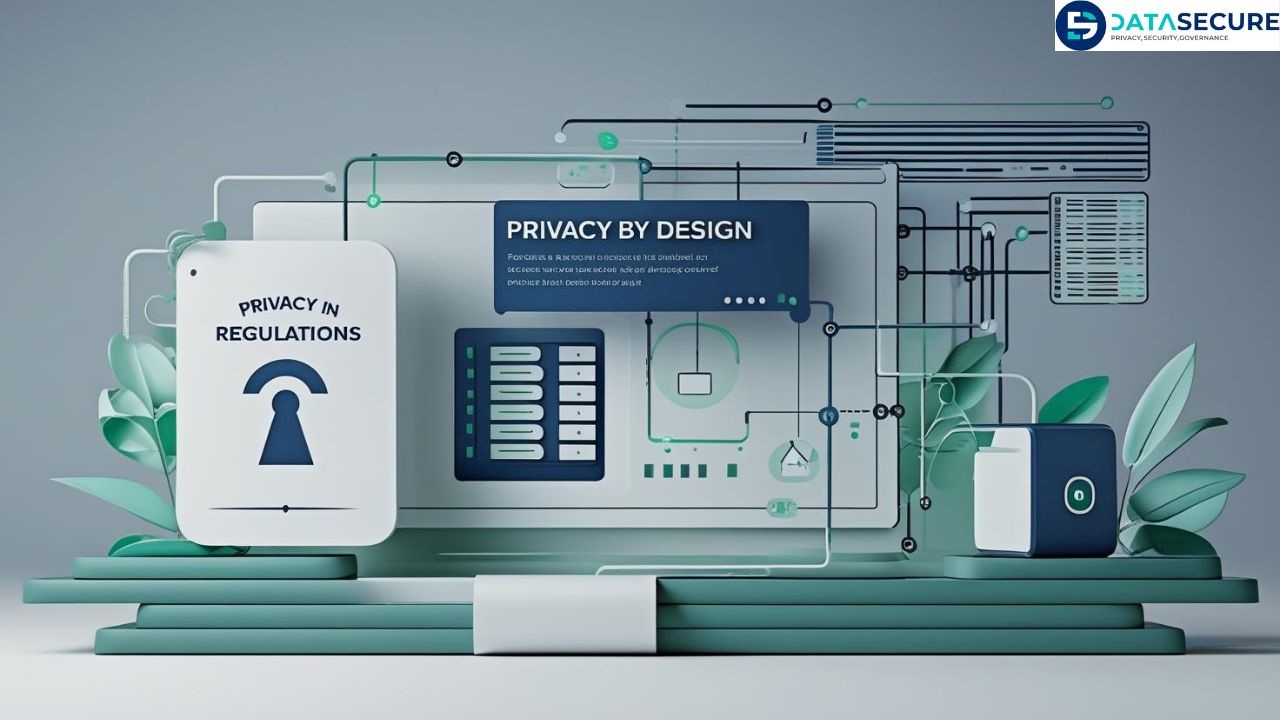Introduction

Today, in a world increasingly driven by data, protecting the confidentiality, integrity, and availability of personal information has become a prerequisite for securing trust and loyalty. The growing complexity of data-intensive services, alongside an ever-evolving legal framework, from the European Union’s General Data Protection Regulation (GDPR) to India’s Digital Personal Data Protection Act, underscores the necessity for organizations to view data protection not as a reactive measure but as a fundamental consideration from the outset. This is where Privacy by Design (PbD) comes into play. Originally formulated by Dr. Ann Cavoukian in the 1990s and subsequently incorporated into numerous data protection regimes, Privacy by Design advocates for embedding privacy controls directly into the architecture and functionality of systems and services. This approach transforms compliance from a reactive, check-the-box exercise into a forward-looking, strategic process, a way to “bake in” data protection at the earliest stages of designing and developing products, services, and business operations.
Meaning and Principle of Privacy by Design

Privacy by Design is a framework and mindset. It aims to anticipate and minimize data-related risks before they manifest and to integrate protective mechanisms directly into the technology, business practices, and operations of an organization. Instead of adding protective measures after a violation occurs, a tactic which often results in patch-up solutions, Privacy by Design advocates for designing systems with fairness, transparency, control, and security in mind from the outset. This approach comprises 7 foundational principles, which collectively guide the implementation of PbD across an enterprise:
- Proactive, not Reactive; Preventative, not Remedial: PbD aims to anticipate and avoid problems instead of reacting after the damage has been done.
- Privacy as the Default Setting: The principal advocates for designing products and services in a way that safeguards personal data by default, without requiring users to take action to activate protective measures.
- Privacy Embedded into Design: Privacy controls should be an essential component of a system's architecture, not an afterthought or add-on.
- Full Functionality: PbD rejects the view that there must be a trade-off between functionality and privacy; instead, it advocates for solutions that maximize both.
- End-to-End Security: Security controls should encompass the whole data lifecycle, from collection through storage, use, transfer, and disposal, assuring ongoing data integrity and confidentiality.
- Visibility and Transparency: Operations should be clear, documented, and subject to independent verification, thereby fostering trust and confidence.
- Respect for User Privacy: The individual's preferences, consent, and control over their data should be a key consideration in designing and developing services.
Why Integrate Privacy by Design?

Today’s businesses process vast amounts of personal data to operate effectively, from customer preferences to financial transactions, making data a valuable asset. Nonetheless, this extensive processing brings significant responsibilities and risks. Non-compliance with data protection laws can result in heavy penalties, legal liabilities, and damage to reputation. Furthermore, consumers are increasingly conscious about their data and expect companies to handle it responsibly. Implementing Privacy by Design is not simply a legal requirement; it’s a powerful way to:
- Reduce compliance risks by designing controls into systems from the outset.
- Foster customer loyalty by honouring their expectations for confidentiality.
- Provide a competitive advantage by demonstrating a strong, proactive approach to data protection.
- Minimise the likelihood and impact of data breach incidents.
- Lower the total cost of compliance and incident response.
Integrating Compliance from the Ground Up - A Tactical Approach

1. Establish a Governance Framework: To embed Privacy by Design, companies should first establish strong internal structures. This involves:
- Appointing a Data Protection Officer (DPO) or a lead person responsible for oversight.
- Setting up a cross-functional team, including legal, IT, product design, and data analysts, to integrate perspectives from all relevant stakeholders.
- Establishing policies, procedures, and controls that reflect PbD principles.
2. Perform Privacy Impact Assessments (PIAs): Before designing a new product, service, or process that involves personal data, organizations should carry out Privacy Impact Assessments (PIAs). PIAs help to:
- Identify and assess the potential risks to the confidentiality and integrity of personal data.
- Determine whether the processing is necessary and proportional.
- Develop appropriate safeguards to minimize or eradicate identified risks.
3. Apply PbD Principles to Architectural Design: Design and architecture should reflect PbD from the outset. This means choosing technical components, storage mechanisms, and communication protocols that:
- Provide strong encryption and pseudonymization where appropriate.
- Support minimum data collection, collecting only what is necessary.
- Enable proper controls over consent and preferences.
4. Develop Clear Data Flow Diagrams: Creating a data flow diagram is a helpful way to visualize:
- Where and how personal data enters, moves through, and exits your systems.
- Which components have access to the data at each point.
- Where controls should be implemented to minimize risk.
5. Implement Access Controls and Security Measures: Controls should reflect the principle of least privilege, granting the minimum level of access necessary to perform a task. This typically involves:
- Role-Based Access Controls (RBAC).
- Multi-factor authentication.
- Encryption of data at rest and in transit.
- Audit trails to track who accessed or altered data.
6. Integrate User Rights into Design: Design must enable data subjects to exercise their rights under applicable laws. This means your architecture should allow:
- Access, rectification, and erasure of their data.
- Portability, the ability to extract their data in a standardized format.
- The ability to withdraw consent easily.
7. Continuous Improvement and Review: Privacy by Design is a process, not a one-time solution. Controls should be regularly reviewed and updated in light of:
- Rising cyberthreats.
- Changes in legal and regulatory regimes.
- Advances in technology.
- Customer complaints or reports of weakness.
Best Practices and Implementation Guidelines: To successfully integrate PbD, organizations should:
- Train their employees: All stakeholders, from designers and engineers to legal and marketing teams, should appreciate the principles of PbD and their roles in protecting data.
- Document decisions: Keep a clear record of the choices made during design and implementation to demonstrate compliance.
- Adopt industry standards: Align controls and processes with recognised standards, such as ISO/IEC 27001 and NIST Privacy Framework, to streamline compliance.
- Leverage automation: Automate controls where appropriate, for example, automatic pseudonymization, to reduce human error and oversight.
- Test and validate: Perform vulnerability assessments, penetration testing, and code reviews to validate the robustness of controls.
The Benefit to Businesses
Adopting Privacy by Design results in numerous benefits to organisations:
- Strengthening Customer Trust: Customers are more likely to do business with companies that handle their data responsibly.
- Reducing Compliance Risk: Integrating PbD makes it less likely that the organization will violate data protection laws and incur penalties.
- Enhancing Security: Designing strong controls from the outset makes it more hard for attackers to compromise a system.
- Boosting Innovation: Privacy by Design advocates for creativity in designing services, not adding obstacles, to maximize functionality while honoring confidentiality.
- Lowering Costs: Addressing compliance and data controls during the design phase avoids expensive retrofitting afterwards.
Privacy by Design in Regulations

The GDPR (General Data Protection Regulation) expressly endorses Privacy by Design in Article 25, stating: “Controllers shall … implement appropriate technical and organisational measures … to implement data protection principles effectively and to integrate necessary safeguards into the processing.” Other jurisdictions, including India's Digital Personal Data Protection Act, reflect this principle in their legislative framework, mandating organisations to implement protective measures by design and by default. This signals a clear policy direction: regulators and lawmakers expect organisations to proactively safeguard data, not react to violations afterwards.
Conclusion
Privacy by Design is more than a legal requirement; it is a forward-thinking approach to protecting data in a world increasingly driven by information. Instead of addressing compliance and security as separate, reactive components, PbD advocates for their integrated consideration from the outset of a system's lifecycle. This not only minimises risk and strengthens compliance but also instils a culture of responsibility within organisations, where protecting the individual's data is everyone's responsibility. As technology evolves and data grows more pervasive, Privacy by Design will become an essential framework for companies that wish to operate responsibly and maintain the trust of their stakeholders. Ultimately, it transforms data protection from a reactive legal hurdle into a strategic opportunity, an opportunity to innovate safely, efficiently, and with a deep understanding of the value of protecting human dignity and autonomy in the digital age.
We at Data sSecure (Data Privacy Automation Solution) DATA SECURE - Data Privacy Automation Solution can help you to understand EU GDPR and its ramificationsand design a solution to meet compliance and the regulatoryframework of EU GDPR and avoid potentially costly fines.
We can design and implement RoPA, DPIA and PIA assessments for meeting compliance and mitigating risks as per the requirement of legal and regulatory frameworks on privacy regulations across the globe especially conforming to GDPR, UK DPA 2018, CCPA, India Digital Personal Data Protection Act 2023. For more details, kindly visit DPO India – Your outsourced DPO Partner in 2025 (dpo-india.com).
For any demo/presentation of solutions on Data Privacy and Privacy Management as per EU GDPR, CCPA, CPRA or India DPDP Act 2023 and Secure Email transmission, kindly write to us at info@datasecure.ind.in or dpo@dpo-india.com.
For downloading the various Global Privacy Laws kindly visit the Resources page of DPO India - Your Outsourced DPO Partner in 2025
We serve as a comprehensive resource on the Digital Personal Data Protection Act, 2023 (DPDP Act), India's landmark legislation on digital personal data protection. It provides access to the full text of the Act, the Draft DPDP Rules 2025, and detailed breakdowns of each chapter, covering topics such as data fiduciary obligations, rights of data principals, and the establishment of the Data Protection Board of India. For more details, kindly visit DPDP Act 2023 – Digital Personal Data Protection Act 2023 & Draft DPDP Rules 2025
We provide in-depth solutions and content on AI Risk Assessment and compliance, privacy regulations, and emerging industry trends. Our goal is to establish a credible platform that keeps businesses and professionals informed while also paving the way for future services in AI and privacy assessments. To Know More, Kindly Visit – AI Nexus Home|AI-Nexus